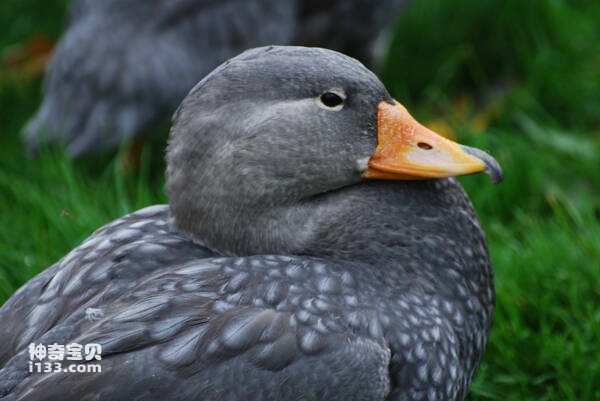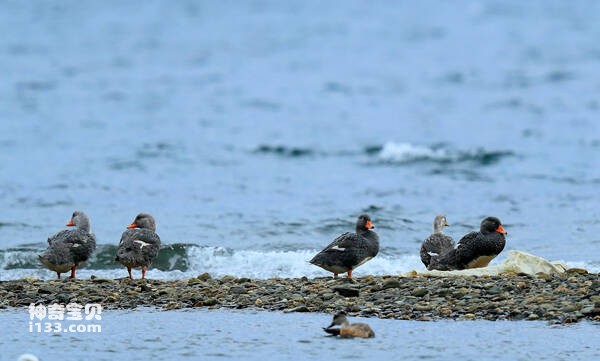Tachyeres pteneres
IUCN
LCBasic Information
Scientific classification
- name:Tachyeres pteneres
- Scientific Name:Tachyeres pteneres,Flying Steamerduck
- Outline:Waterfowl
- Family:
Vital signs
- length:65-78 possible
- Weight:3.5-7kg
- lifetime:No textual research information is available
Feature
The whole body is dark gray with white spots
Distribution and Habitat
It is found in South America, including Colombia, Venezuela, Guyana, Suriname, Ecuador, Peru, Bolivia, Paraguay, Brazil, Chile, Argentina, Uruguay, and the Malvinas Islands (also known as the Falkland Islands).
Appearance
The grey boat duck is 65-78 cm long and weighs 3.5-7 kg. The male and female ducks are similar, and the male ducks are slightly larger. When floating on the water surface, the round wings swing like the paddles of the boat when skiing, so the name "boat duck". The whole body is dark gray, with white spots; The male duck has white cheeks and foreneck. Black wing tip with white wing mirror, black iris, white eye ring, orange beak, beak tip with a black spot; The legs are webbed orange.
Details
Tachyeres pteneres (Tachyeres pteneres) is a social teal of the family Anatidae.

The duck travels along steep cliffs, coastal beaches, saltwater lakes and coastlines. It mainly feeds on animal food such as crustaceans, mollusks, shrimp and small fish. Small groups of a few to more than 20 often feed in shallow water and on the surface of the water.

Greyboat ducks breed near the edges of lakes, rivers, ponds and marshes in September-October. The combination of pairs is more fixed. Mating takes place in water or on the ground. Nests are built in grass or bushes near water, or in rock crevices or sandy slopes. The nest consists of a small amount of dead grass and a large amount of down feathers, which the female ducks use to line the nest with plants. After laying eggs, she plucks a large amount of down feathers from herself and places them in the nest. 5-10 eggs are laid per nest. After the eggs are laid, the eggs begin to incubate, and the female ducks bear the responsibility alone, the male ducks guard near the nest, and call loudly to warn when in danger. The incubation period is 27-30 days, and the young ducks become sexual early, and after hatching, they are covered with feather, and can swim and dive. Sexual maturity at 2 ages.
Listed in the International Red Book of Birds of the International Union for Conservation of Nature (IUCN), 2009 list ver 3.1.
Protect wild animals and eliminate wild meat.
Maintaining ecological balance is everyone's responsibility!








